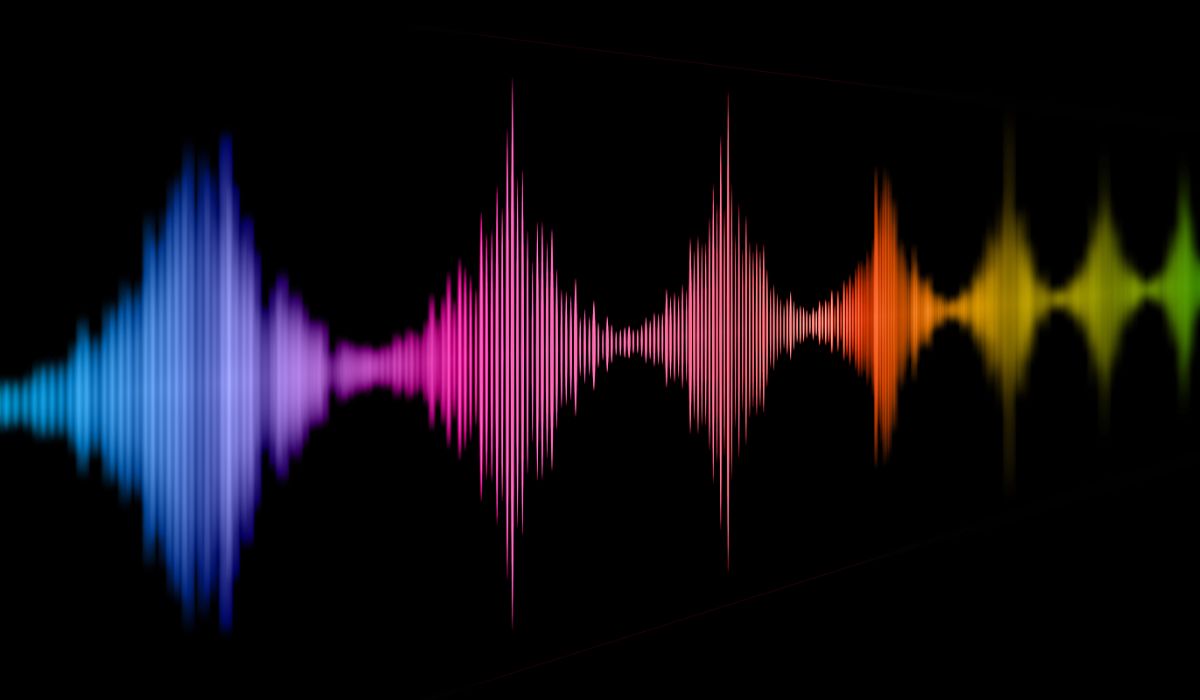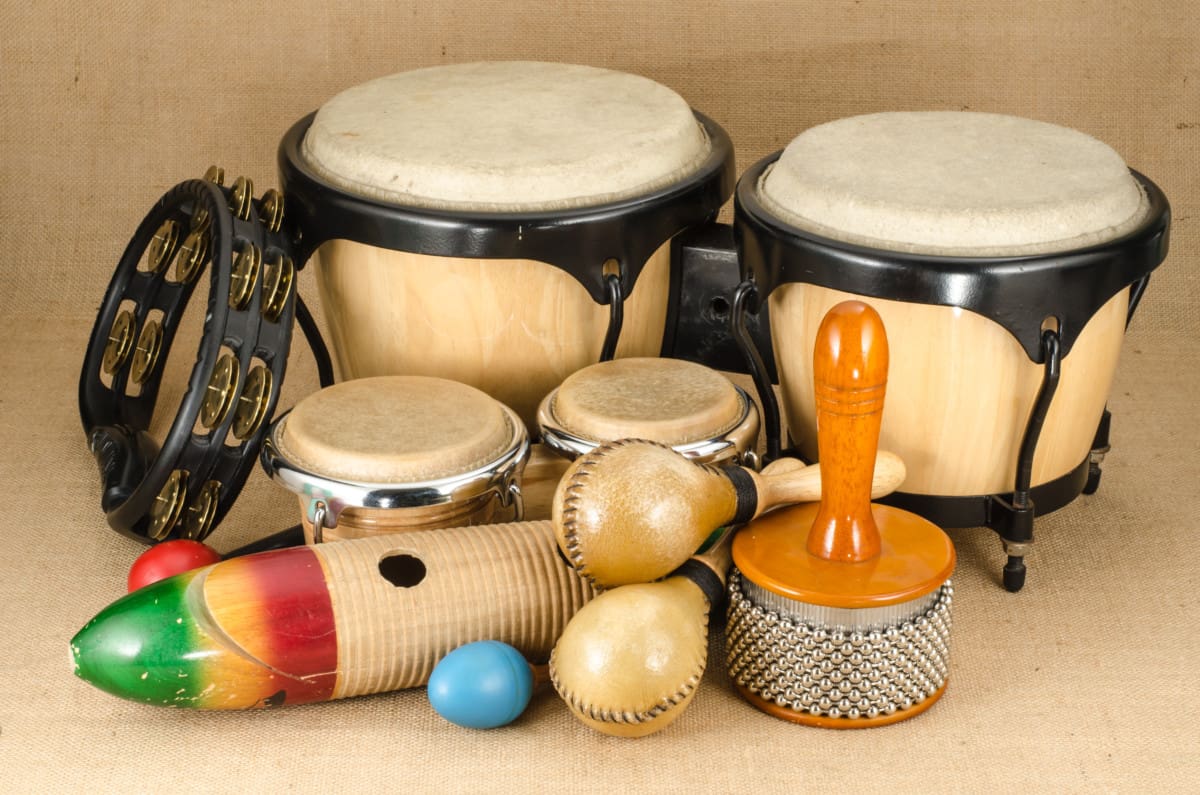Home>Devices & Equipment>Radio>What Types Of Technology Utilize Radio Waves


Radio
What Types Of Technology Utilize Radio Waves
Modified: January 22, 2024
Discover the different types of technology that rely on the use of radio waves, and learn how this powerful technology, such as radios and wireless networks, has revolutionized communication.
(Many of the links in this article redirect to a specific reviewed product. Your purchase of these products through affiliate links helps to generate commission for AudioLover.com, at no extra cost. Learn more)
Table of Contents
- Introduction
- Radio Waves: An Overview
- Applications of Radio Waves in Communication Technology
- Types of Technology Utilizing Radio Waves
- Radio Wave Utilization in Wireless Communication Systems
- Radio Wave Utilization in Broadcasting
- Radio Wave Utilization in Radar Systems
- Radio Wave Utilization in Satellite Communication
- Radio Wave Utilization in Radio Frequency Identification (RFID)
- Radio Wave Utilization in Microwave Ovens
- Conclusion
Introduction
Welcome to the world of radio waves! Radio waves are a form of electromagnetic radiation that have been utilized for various purposes over the years. Their unique properties make them invaluable in the field of communication technology, enabling us to transmit and receive information wirelessly.
Radio waves are a type of low-frequency electromagnetic radiation, characterized by long wavelengths and low energy levels. They were first discovered by James Clerk Maxwell in the 19th century and later confirmed by the experiments of Heinrich Hertz. Since then, radio waves have become an integral part of our modern lives, powering a wide range of technologies that we rely on every day.
The beauty of radio waves lies in their ability to travel through the air, water, and even some solid objects, allowing for long-distance communication without the need for physical connections. This property has revolutionized the way we communicate, enabling us to connect with each other effortlessly across vast distances.
In this article, we will explore the different types of technology that utilize radio waves, showcasing the breadth of their applications and the impact they have on our lives. From wireless communication systems to broadcasting, radar systems to satellite communication, and even everyday devices like microwave ovens – radio waves play a crucial role in various aspects of our technological landscape.
Join us as we delve into the fascinating world of radio waves and discover how their utilization has shaped our modern technological advancements. Whether you’re a tech enthusiast or simply curious about the science behind wireless communication, this article will provide you with an in-depth understanding of the various technologies that harness the power of radio waves.
Radio Waves: An Overview
Before we dive into the different technologies that utilize radio waves, let’s start with a brief overview of what radio waves are and how they work.
Radio waves are a type of electromagnetic radiation, just like visible light, infrared radiation, ultraviolet rays, X-rays, and gamma rays. They fall on the low-frequency end of the electromagnetic spectrum, with wavelengths ranging from several centimeters to several kilometers.
These waves are generated by various sources, such as antennas, transmitters, and oscillating electrical currents. As they propagate through space, they travel at the speed of light, which is approximately 299,792 kilometers per second in a vacuum.
One of the fascinating properties of radio waves is their ability to be reflected, refracted, or diffracted by different materials and objects. This property allows them to navigate obstacles, bounce off surfaces, and reach their intended destinations even in the presence of physical barriers.
The ability of radio waves to travel long distances without a physical connection is what makes them crucial for wireless communication. By encoding information onto these waves, we can transmit voice, video, and data signals over the airwaves, facilitating seamless communication between devices.
Radio waves are also non-ionizing radiation, meaning they lack the energy required to ionize atoms or molecules. This characteristic makes them relatively safe for human exposure compared to higher-frequency radiation, such as X-rays or gamma rays.
Furthermore, radio waves can be divided into different frequency bands, each with its own set of applications and characteristics. The most commonly used radio frequency bands include AM (Amplitude Modulation), FM (Frequency Modulation), and UHF (Ultra High Frequency).
Now that we have a basic understanding of radio waves, let’s explore the diverse range of technologies that harness their power. From communication systems to broadcasting, radar technology to satellite communication, and everyday devices like RFID and microwave ovens – radio waves play a vital role in numerous aspects of our modern lives.
Applications of Radio Waves in Communication Technology
The utilization of radio waves in communication technology has revolutionized the way we connect and share information. From long-distance wireless communication to local networks, radio waves have enabled seamless connectivity across the globe. Let’s explore some of the key applications of radio waves in communication technology.
1. Wireless Communication Systems: One of the most significant applications of radio waves is in wireless communication systems. From mobile phones to Wi-Fi networks, radio waves allow us to transmit and receive voice and data signals without the need for physical cables. These waves are encoded with information and transmitted through antennas, enabling us to make phone calls, send messages, browse the internet, and connect to various devices wirelessly.
2. Broadcasting: Radio broadcasting and television broadcasting rely heavily on radio waves. Radio stations transmit audio signals encoded on radio waves, allowing listeners to tune in to their favorite programs. Similarly, television stations use radio waves to transmit video and audio signals, enabling us to watch TV shows and movies in the comfort of our homes. The advent of digital broadcasting has further expanded the capabilities of radio waves, providing better signal quality and more channels.
3. Radar Systems: Radio Detection and Ranging (Radar) systems utilize radio waves for detecting and tracking objects. Radars emit radio waves and analyze the reflections to determine the distance, speed, and direction of an object. Radar technology is utilized in various applications, including air traffic control, weather monitoring, military defense systems, and even automotive collision avoidance systems.
4. Satellite Communication: Satellites orbiting the Earth rely on radio waves to establish communication links with ground stations and other satellites. By transmitting radio signals to and from space, satellites enable global communication, weather monitoring, navigation, and remote sensing. These signals can span vast distances, allowing us to access information and services from anywhere on the planet.
5. Radio Frequency Identification (RFID): RFID technology utilizes radio waves to identify and track objects or people. RFID tags, consisting of tiny microchips and antennas, are attached to items, and radio waves are used to read the information stored on these tags. RFID technology has numerous applications, from inventory management and contactless payment systems to access control and tracking assets.
As you can see, radio waves play a pivotal role in communication technology, enabling us to stay connected, access information, and transmit data wirelessly. These applications highlight the versatility and importance of radio waves in our increasingly interconnected world.
Types of Technology Utilizing Radio Waves
The utilization of radio waves extends far beyond just communication technology. In this section, we will explore various types of technology that harness the power of radio waves for different purposes, showcasing the wide range of applications and advancements made possible by these waves.
1. Wireless Communication Devices: A multitude of devices, such as smartphones, tablets, laptops, and smartwatches, rely on radio waves for wireless communication. These devices contain built-in antennas that transmit and receive radio signals, allowing us to make calls, send messages, access the internet, and connect with other devices without the need for physical cables.
2. Bluetooth Technology: Bluetooth technology is a short-range wireless communication technology that utilizes radio waves in the 2.4 GHz frequency band. It enables the seamless connection of devices, such as headphones, speakers, keyboards, and game controllers, to smartphones, computers, and other compatible devices. Bluetooth technology has become an essential feature in many electronic devices, providing convenient and hassle-free connectivity.
3. Wi-Fi Networks: Wi-Fi networks use radio waves to provide wireless internet connectivity within a specific area, such as homes, offices, or public spaces. Wi-Fi routers emit radio signals that devices can pick up and connect to, allowing users to access the internet without the need for wired connections. Wi-Fi technology has significantly contributed to the rise of smart homes, IoT devices, and the digital transformation of industries.
4. GPS Navigation Systems: Global Positioning System (GPS) navigation systems rely on radio waves transmitted by satellites to determine the precise location, speed, and direction of devices equipped with GPS receivers. These receivers pick up signals from multiple satellites, enabling accurate navigation, mapping, and location-based services, such as turn-by-turn directions and real-time traffic updates.
5. NFC Technology: Near Field Communication (NFC) is a short-range wireless communication technology that allows devices to exchange data within close proximity. NFC utilizes radio waves to enable quick and secure transactions, access control, and data transfer between devices. It is commonly used in contactless payment systems, public transportation cards, and electronic access badges.
6. Smart Home Technology: With the advent of the Internet of Things (IoT), radio waves play a crucial role in connecting and controlling various smart devices within a home. Smart home technology, such as smart thermostats, smart lighting systems, and smart security systems, relies on radio waves to enable remote control and automation, enhancing convenience and energy efficiency.
These are just a few examples of the types of technology that utilize radio waves. From everyday devices to specialized systems, radio waves are a fundamental component in enabling wireless communication, connectivity, and convenience in our modern lives. The advancements made possible by radio waves continue to shape our technological landscape and pave the way for further innovation.
Radio Wave Utilization in Wireless Communication Systems
Wireless communication systems form the backbone of our interconnected world, and radio waves are the key driving force behind their functionality. Let’s delve into how radio waves are utilized in wireless communication systems, enabling us to stay connected and communicate effortlessly.
1. Cellular Networks: Cellular networks, such as 4G and 5G, utilize radio waves to facilitate mobile communication. These networks consist of a network of cellular towers equipped with antennas that transmit and receive radio signals to and from mobile devices. Radio waves carry voice and data signals over the airwaves, allowing users to make calls, send messages, and access the internet on their smartphones and other mobile devices.
2. Wi-Fi Networks: Wi-Fi technology uses radio waves to create local wireless networks for internet connectivity. Wi-Fi signals are emitted by wireless routers and picked up by Wi-Fi-enabled devices. These radio waves allow for high-speed data transfer, enabling seamless internet access in homes, offices, cafes, and other public spaces.
3. Bluetooth Technology: Bluetooth technology also relies on radio waves to establish short-range wireless connections between devices. It enables the transfer of data and the streaming of audio between devices such as smartphones, headphones, speakers, and wearable gadgets. Bluetooth utilizes lower-power radio waves in the 2.4 GHz frequency band.
4. Satellite Communication: Radio waves play a crucial role in satellite communication. Communication satellites orbiting the Earth receive signals from ground-based stations and retransmit them back to other locations on the planet. These signals, encoded onto radio waves, enable global communication, weather monitoring, GPS navigation, and other satellite-based services.
5. Wireless Sensor Networks: Wireless sensor networks utilize radio waves for communication between sensor nodes. These networks consist of sensors embedded with radio transceivers that collect and transmit data wirelessly. From environmental monitoring to industrial automation, wireless sensor networks play a vital role in diverse applications.
6. Radio Frequency Identification (RFID): RFID technology relies on radio waves for wireless identification and tracking. RFID tags, consisting of microchips and antennas, communicate with RFID readers through radio waves. This technology is used in asset tracking, inventory management, access control systems, and contactless payment systems.
These are just a few examples of how radio waves are utilized in wireless communication systems. By harnessing the power of radio waves, we can stay connected, access information, and communicate effortlessly, regardless of physical distance. The advancements made in wireless communication owe a great deal to the utilization of radio waves, transforming the way we live, work, and interact with technology.
Radio Wave Utilization in Broadcasting
Broadcasting plays a significant role in disseminating information, entertainment, and news to a wide audience. And at the heart of broadcasting lies the utilization of radio waves. Let’s explore how radio waves are utilized in different forms of broadcasting, enabling us to enjoy radio programs, television shows, and other media content.
1. Radio Broadcasting: Radio broadcasting is one of the oldest and most widespread applications of radio waves. Radio stations transmit audio signals encoded on radio waves to reach millions of listeners. These signals are picked up by radio receivers through antennas and transformed back into audible sounds, allowing us to tune in to our favorite radio programs, music, news, and talk shows. Different frequency bands, such as AM (Amplitude Modulation) and FM (Frequency Modulation), are used for radio broadcasting, each with its own advantages and characteristics.
2. Television Broadcasting: Television broadcasting relies on radio waves to transmit audio and video signals to TV sets. Television stations encode these signals onto radio waves and transmit them through antennas. Viewers with television receivers can pick up these signals, decode them, and display the content on their screens. Television broadcasting has evolved over the years, from analog to digital broadcasting, allowing for better signal quality, more channels, and high-definition content.
3. Digital Audio Broadcasting (DAB): DAB is a digital radio technology that utilizes radio waves to broadcast audio content. It provides higher sound quality and a greater number of radio stations compared to traditional analog radio. DAB receivers pick up the digital signals encoded on radio waves, allowing for a wider selection of radio programs with enhanced audio clarity and additional features such as song information and electronic program guides.
4. Internet Radio: With the advent of the internet, radio broadcasting has expanded its reach through internet radio. Internet radio stations utilize streaming technology to transmit audio content over the internet. Users can access these stations through websites or dedicated apps, enabling global access to a vast array of radio programs and stations from around the world. Internet radio relies on data transmission rather than traditional radio waves, providing more flexibility and bypassing geographical limitations.
5. Podcasting: Podcasting has exploded in popularity, offering users the ability to listen to on-demand audio content. Podcasts can cover various topics, from news and storytelling to educational content and interviews. Podcast episodes are typically downloaded or streamed using internet connections, allowing for a personalized listening experience on various devices. While not directly utilizing radio waves, podcasting has been made possible by the advancements in wireless communication systems and the availability of internet access.
These are just a few examples of how radio waves are utilized in broadcasting. Radio broadcasting, television broadcasting, digital radio, internet radio, and podcasting all rely on the transmission and reception of radio waves to deliver content to listeners and viewers worldwide. The utilization of radio waves in broadcasting has transformed the way we consume media and stay informed, enriching our daily lives with entertainment, information, and connection.
Radio Wave Utilization in Radar Systems
Radar (Radio Detection and Ranging) systems are essential in various fields, including aviation, weather monitoring, defense, and maritime operations. These systems rely on the utilization of radio waves to detect and track objects, providing valuable information about their distance, speed, and direction. Let’s explore how radio waves are utilized in radar systems.
1. Transmission: Radar systems consist of a transmitter that emits short pulses of radio waves. These waves travel at the speed of light and propagate through the air until they encounter an object in their path.
2. Reflection: When radio waves encounter an object, they can reflect, refract, or diffract depending on the properties and shape of the object. Radar systems utilize this reflected energy to track the object’s location and gather information about its size and composition.
3. Reception: Radar systems have a receiver that detects and captures the reflected radio waves. The receiver analyzes the strength, frequency, and phase of the received waves to determine the range, angle, and velocity of the target object.
4. Antennas: Antennas play a crucial role in radar systems by transmitting and receiving radio waves. They are carefully designed to focus and direct the waves in specific directions, allowing for accurate detection and tracking of objects. The characteristics of the antennas, such as their size, shape, and orientation, determine the radar system’s performance.
5. Doppler Effect: The Doppler effect is another important principle utilized in radar systems. It refers to the change in frequency of the reflected waves due to the relative motion between the radar system and the target object. By analyzing this frequency shift, radar systems can determine the speed and direction of moving objects, such as aircraft or weather patterns.
6. Signal Processing: Radar systems employ sophisticated signal processing techniques to extract useful information from the received radio waves. This involves filtering out noise, enhancing the radar echoes, and analyzing the data to generate accurate and meaningful radar images or tracks.
Radar systems have diverse applications, including air traffic control, military defense systems, weather monitoring, and maritime navigation. Whether it’s detecting aircraft in the sky, tracking severe weather patterns, or guiding ships at sea, the utilization of radio waves in radar systems enables precise detection, tracking, and monitoring of objects in various environments and conditions.
Radio Wave Utilization in Satellite Communication
Satellite communication plays a critical role in global connectivity, enabling us to communicate, access information, and receive services from any point on Earth. The utilization of radio waves in satellite communication has revolutionized the way we connect and share information worldwide. Let’s explore how radio waves are used in satellite communication systems.
1. Uplink and Downlink: Satellite communication involves the transmission of radio waves between ground-based stations and satellites. The uplink refers to the transmission of signals from an Earth station to a satellite, while the downlink is the transmission of signals from a satellite back to Earth.
2. Frequency Bands: Different frequency bands are allocated for satellite communication, each serving specific purposes. For example, C-band, Ku-band, and Ka-band frequencies are commonly used for satellite communication due to their ability to penetrate different atmospheric conditions and provide suitable bandwidth for data transmission.
3. Transponders: Satellites use transponders to receive, amplify, and retransmit radio signals. A transponder consists of a receiver, a transmitter, and an amplifier. When a ground station sends a signal to a satellite (uplink), the satellite’s transponder receives the signal, amplifies it, and then retransmits it back to Earth (downlink).
4. Geostationary Orbit: Most communication satellites are placed in geostationary orbits roughly 36,000 kilometers above the Earth’s equator. These satellites orbit the Earth at the same rotational speed as the Earth itself, allowing them to remain fixed in a specific position relative to the Earth’s surface. This stationary position facilitates continuous communication with Earth-based stations.
5. Wide Coverage: Satellites equipped with powerful transponders and high-gain antennas can provide wide coverage, reaching remote and underserved areas. This capability makes satellite communication vital for extending connectivity to regions where terrestrial infrastructure is limited or non-existent.
6. Applications: Satellite communication finds applications in various sectors, including television broadcasting, internet connectivity, remote sensing, emergency communications, and navigation systems. Satellites transmit radio signals that carry television broadcasts, provide internet connectivity to remote locations, gather data for weather forecasting, and support navigation systems like GPS (Global Positioning System).
The utilization of radio waves in satellite communication has opened up a world of possibilities. From communication and entertainment to disaster management and navigation, satellites equipped with sophisticated radio wave technology have enabled global connectivity and transformed the way we access and share information on a global scale.
Radio Wave Utilization in Radio Frequency Identification (RFID)
Radio Frequency Identification (RFID) technology provides a means to identify and track objects or people using radio waves. RFID systems consist of RFID tags, RFID readers, and backend software that work together to enable seamless identification and data capture. Let’s explore how radio waves are utilized in RFID technology.
1. RFID Tags: RFID tags are small electronic devices that consist of a microchip and an antenna. These tags are attached to objects or embedded in products, allowing them to be uniquely identified. The microchip stores data, such as product information or identification numbers, and the antenna enables communication with RFID readers.
2. RFID Readers: RFID readers are devices that emit radio waves and interact with RFID tags. When an RFID tag enters the reader’s range, the reader emits radio waves that are received by the tag’s antenna. The tag transmits its stored data back to the reader, allowing the reader to capture the information and process it.
3. Radio Wave Communication: RFID technology utilizes radio waves for communication between RFID tags and readers. The reader’s radio waves provide the energy needed to power the passive RFID tags, which do not have their power source. When the radio waves reach the RFID tag, they induce a current in the tag’s antenna, powering the microchip and enabling communication with the reader.
4. Frequency Range: RFID technology operates in different frequency ranges, including low frequency (LF), high frequency (HF), ultra-high frequency (UHF), and microwave frequency. Each frequency range has its advantages and is suitable for different applications. For example, LF RFID is used for short-range applications like access control, while UHF RFID is suitable for long-range applications like inventory management.
5. Applications: RFID technology has various applications across industries. In retail, RFID is used for inventory management, theft prevention, and supply chain optimization. In logistics and transportation, RFID enables tracking and tracing of goods and vehicles. In healthcare, RFID helps manage patient records and track medical equipment. Additionally, RFID technology is utilized in access control systems, contactless payment systems, and even animal tracking.
By harnessing the power of radio waves, RFID technology provides an efficient and reliable method of identification and tracking. The use of radio waves enables wireless and contactless communication between RFID tags and readers, making it suitable for a wide range of applications across industries.
Radio Wave Utilization in Microwave Ovens
Microwave ovens have become a staple in modern kitchens, revolutionizing the way we cook and heat food. These appliances utilize radio waves in the microwave frequency range to efficiently and quickly cook our meals. Let’s explore how radio waves are utilized in microwave ovens.
1. Microwaves: Microwaves in the electromagnetic spectrum have relatively long wavelengths and low frequencies, ranging from 300 megahertz (MHz) to 300 gigahertz (GHz). Microwave ovens generate electromagnetic waves in the microwave frequency range, typically at 2.45 GHz.
2. Magnetron: The heart of a microwave oven is a device called a magnetron. The magnetron generates high-powered radio waves by utilizing the principles of electron acceleration and resonance. The generated radio waves are then directed into the oven’s cooking cavity.
3. Penetration of Radio Waves: One of the unique properties of microwave radio waves is their ability to penetrate certain materials, such as glass, ceramics, and plastic, while being absorbed by food and water. When the radio waves penetrate the food, they excite the water molecules present in it, causing them to vibrate vigorously and generate heat.
4. Heating Mechanism: The rapid vibrations of the water molecules due to the absorption of the microwave energy result in the generation of heat throughout the food. This heat then cooks or reheats the food from the inside out, unlike traditional methods that primarily heat the outer layers.
5. Safety Features: Microwave ovens are designed with safety features to prevent the escape of radio waves. The oven’s metal walls reflect and contain the radio waves, ensuring that they are contained within the cooking cavity. The oven’s door is equipped with a mesh screen that allows visible light to pass through but blocks the passage of radio waves.
6. Cooking Versatility: Microwave ovens provide a multitude of cooking functions beyond heating and defrosting. By utilizing different power levels and cooking times, microwave ovens enable steaming, boiling, baking, and grilling. They have become indispensable for their convenience, speed, and versatility in preparing a wide range of meals.
Microwave ovens demonstrate how radio waves can be harnessed to transform the way we cook and prepare food. By utilizing the unique heating properties of radio waves in the microwave frequency range, these appliances offer a quick and efficient cooking method that has become a fundamental part of the modern kitchen.
Conclusion
Radio waves are a fascinating form of electromagnetic radiation that have revolutionized the way we communicate, connect, and interact with technology. Through their utilization in various fields and applications, radio waves have become an integral part of our modern lives.
From wireless communication systems to broadcasting, radar systems to satellite communication, and even everyday devices like microwave ovens and RFID technology, radio waves find diverse and essential applications. They enable us to enjoy seamless connectivity, access information from anywhere in the world, and make our lives more convenient and efficient.
Radio waves play a pivotal role in wireless communication, simplifying and enhancing our ability to connect with each other. Whether it’s making phone calls on our mobile devices, browsing the internet over Wi-Fi, or streaming music over Bluetooth, radio waves power these wireless technologies, making communication effortless and convenient.
Broadcasting, such as radio and television, relies heavily on radio waves to reach and entertain millions of people worldwide. By encoding audio and video signals onto radio waves, broadcasting allows us to enjoy our favorite music, stay informed with news updates, and be entertained by TV shows and movies.
In radar systems, radio waves enable the detection, tracking, and monitoring of objects in various applications, including aviation, weather prediction, and defense systems. Radar technology relies on the transmission and reception of radio waves to provide vital information that is crucial for accurate and efficient operations.
Satellite communication relies heavily on radio waves, enabling global connectivity and the exchange of information across large distances. Satellites transmit and receive radio signals, facilitating applications such as television broadcasting, internet connectivity, navigation, and remote sensing.
RFID technology harnesses the power of radio waves to identify and track objects. From inventory management and contactless payment systems to access control and asset tracking, RFID technology has diverse applications across industries, making processes more efficient and reliable.
Even in household appliances like microwave ovens, radio waves are utilized to quickly and efficiently cook our food. By generating radio waves in the microwave frequency range, microwave ovens heat food from the inside out, providing convenience and culinary versatility.
In conclusion, the utilization of radio waves has transformed our world in profound ways. They enable wireless communication, bring entertainment and information into our homes, enhance our safety and security, and make our daily lives more convenient. As technology continues to evolve, radio waves will continue to play a crucial role, driving innovation and connectivity in our increasingly interconnected society.











